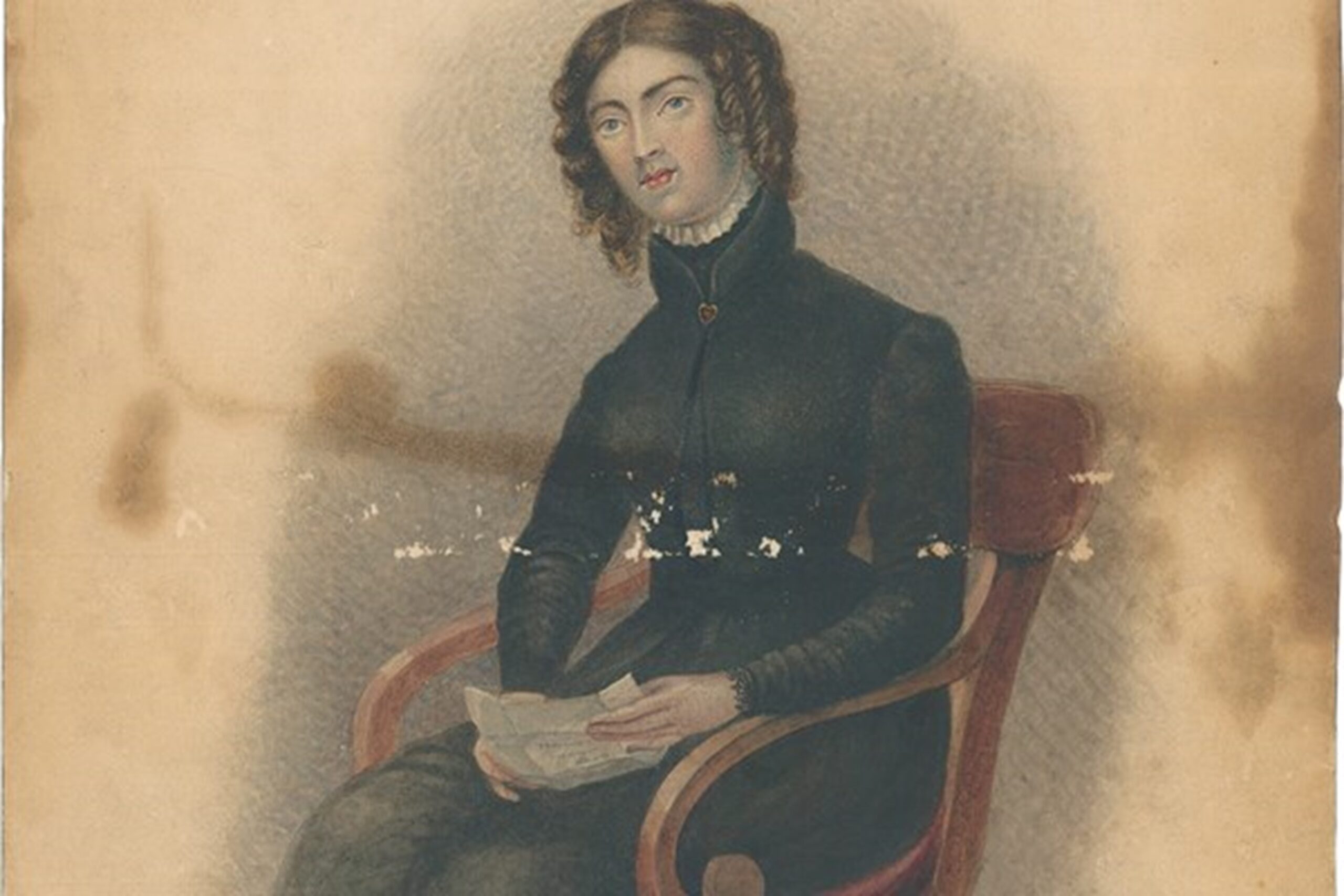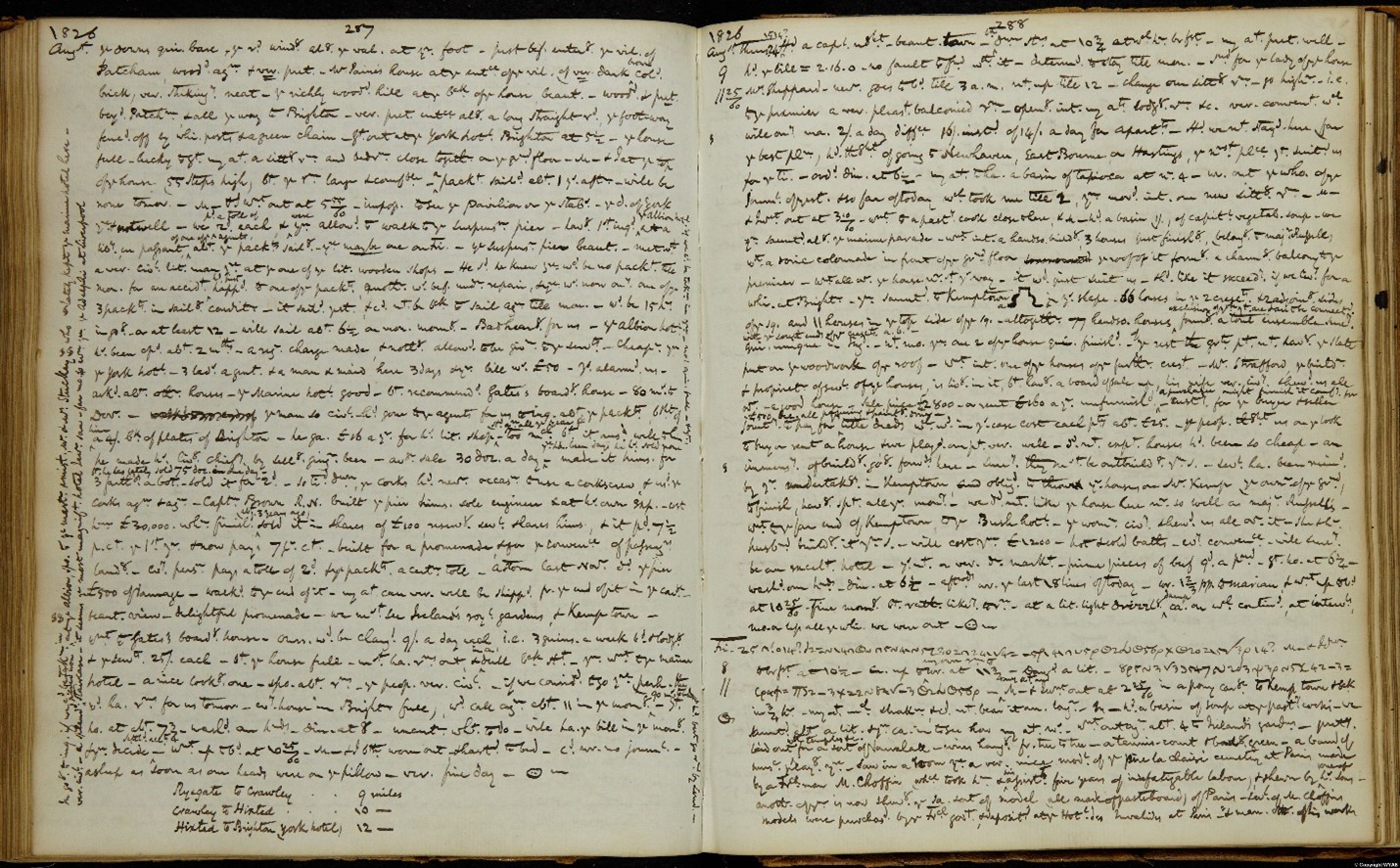The Gay Capital of the UK: A brief queer story of Brighton & Hove
We are amidst Pride season here in the UK. On Saturday 3 August 2024, Brighton & Hove will be hosting one of the largest Pride parades in the country. Brighton & Hove Museums will be taking part in the fun, colour and protest.
Our five sites across the city are welcoming spaces for all. Brighton Museum & Art Gallery currently has three LGBTQ+ displays; Queer the Pier and Queer Looks exhibitions and a display by the All-Sorts Youth group in our Local History Gallery.
Many people ask why Brighton & Hove has become synonymous with relaxed attitudes to sexuality and gender – we are known as the ‘Gay Capital,’ of the UK. Our Queer the Pier exhibition explores this question.

Brighton was a garrison town in response to the French Revolution (1789-1799) followed by the Napoleonic Wars (1803-1815). It is believed this drew many men to Brighton due to the vast numbers of soldiers in the town. In 1822 George Wilson a servant from Newcastle-upon-Tyne was accused by a guardsman he had met in the Duke of Wellinton public house in Pool Valley of having offered him a sovereign and two shillings to go with him onto the beach to “commit an unnatural crime.”
During this same period this once small fishing village found itself growing into a health resort after Dr Richard Russell of Lewes in 1750 popularised the benefits of taking the sea water – both bathing and drinking it. High society was drawn to the town, with its most famous visitor George IV first arriving in 1783, a then 21-year-old Prince of Wales. A craving for entertainment resulted in the construction of various theatres that came and went in Brighton, culminating with the opening of the Theatre Royal on New Road in 1807, which is still operation today. The fashionable metropolitan atmosphere of the town made it the ideal venue for premiering new plays before transferring to London.
With the advent of the railway opening in 1841, journeys between London and Brighton became easier and cheaper. More people of all classes flocked to the seafront for pleasure and entertainment, many of which was provided on the town’s piers.
In 1884 Oscar Wilde (1854-1900), gave a series of lectures at the Royal Pavilion as part of his UK Lecture tour of 1883-1885. He returned to the town in September 1894 to rent a room at the Royal Albion Hotel, with Worthing newspaper seller Alfonso Conway – a liaison that would prove fateful for the writer at the height of his fame. It would be six months later that the Marquis of Queensberry, father of Wilde’s lover Lord Alfred Douglas, hired a private detective to track Conway down, threatening him to reveal all.
Male homosexuality was wretchedly legislated a criminal offence up until the first half of the twentieth century, whereas lesbianism was not subject to legal punishments. The absence of any public scandals and persistent denial in a patriarchal society that women could partake in such ‘wicked acts,’ caused women-loving-women relationships to be rendered invisible, making their stories hard to tell for future generations.


Yorkshire landowner, Anne Lister ‘the first modern lesbian,’ (1791-1840) visited Brighton in 1826 with her lover Marianna Lawton. Their unscheduled stay in the then Regency town for three days was due to delays with stormy weather for a pack-boat to sail from Newhaven to France. In Anne’s journal she noted that during their stay in the town, she haggled with a market trader over a second-hand 10 inch-long thermometer in a red Morocco case. The lovers also promenaded along The Chain Pier.
Like George IV, numerous visitors ‘took’ the waters during their stay in the town, either through a 6am dip in the freezing cold sea or drinking it. Marianne opted for the latter. The ghastly concoction consisted of sea water mixed with heated milk, crushed cuttlefish bones and other unpalatable ingredients. Unsurprisingly, Marianna was sick in bed, but according to Anne’s coded entries, this didn’t prevent the pair from indulging in some lovemaking the following morning!

On 9 September 1875, one of the greatest swimming feats of the era was achieved not by a man, but by a woman and a woman that we would consider a lesbian today. Her name was Harriet Elphinstone-Dick (1852-1902).
Born in Brighton in 1852, Harriet defied Victorian social conventions for females. She taught swimming at Brill’s Baths to women and girls. The Baths, which no longer exist, were located in Pool Valley. They housed separate swimming pools for men and women. In her determination to show that women could participate in exercise and were not hindered by their biology, Harriet took part in various swimming feats.
She was originally to swim from Rottingdean to Brighton, but due to unpredictable weather conditions, this course was altered so that she and her fellow swimmer Helen Saigeman set off from Shoreham Harbour to Brighton’s West Pier. Saigeman was forced to drop out during the swim due to severe cramp. Elphinstone-Dick powered on, with The Brighton Gazette noting that she was still fresh and undaunted in her journey. Her determination paid off. In a record making 2 hours and 45 minutes, Harriett was lauded by the press and public at the time for her incredible achievement in rough water.
Her story then transfers to Australia. With her lover Alice Moon they sail together out to Melbourne, in December 1875. Several years later they would set up the first female gymnasium in the city.
By the 1930s, Brighton started to flourish as a gay destination, with the establishment of many gay and lesbian pubs and the use of other venues in the town. The burgeoning gay and lesbian scene encouraged activism. The Royal Albion Hotel was a linchpin venue, hosting a Women Only Tea Dance in the early 20th century. After the 1967 partial decriminalisation of homosexuality, the Gay Liberation Front held meetings there in the opening years of the 1970s. The first Gay Pride March in 1973 concluded with a Gay Tea Dance at the hotel.
The March didn’t return until 1991, born out of the political objections of Section 28 – the ban of the so called ‘promotion of homosexuality’ by local authorities and the deepening AIDS crisis. As society shifted in widening acceptance of LGBTQ+ lives, our city today continues to hold Pride each year. In 2013, it proudly hosted its first Trans Pride.
Brighton & Hove has a rich and diverse past, which informs its liberal, artistic and accepting present. In reflecting our local communities, Brighton & Hove Museum’s Royal Pavilion takes much joy and honour for being a wedding venue open to anyone who wishes to celebrate their civil partnerships or weddings.
This blog was written by Lisa Hinkins, Museum Educator and co-curator of Queer the Pier exhibition
In October 2024, Lisa will be commencing her AHRC Techne funded PhD tilted: Where are all the Lesbians? In search of Lesbian Lives in Museums, with the University of Brighton and Brighton & Hove Museums.